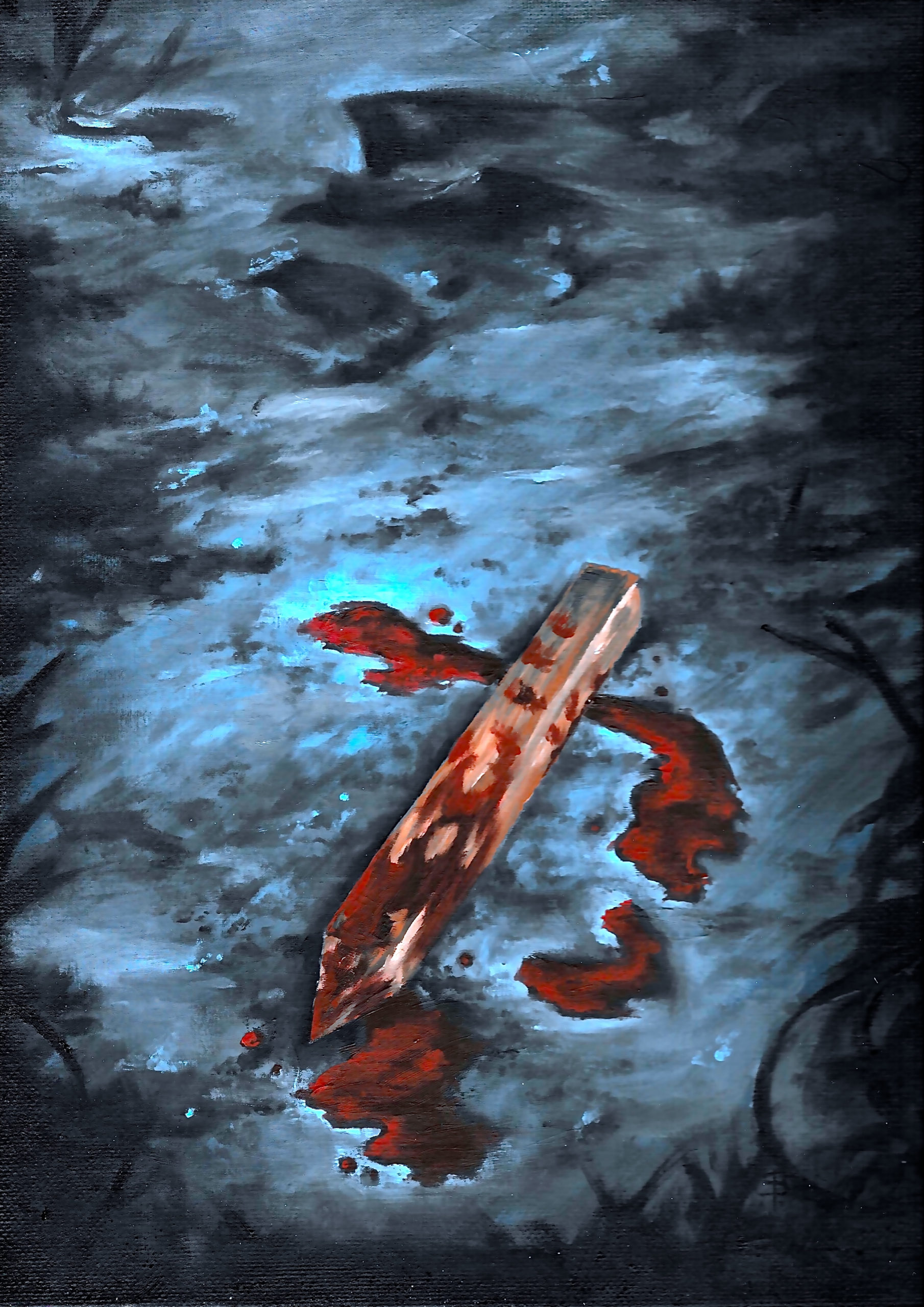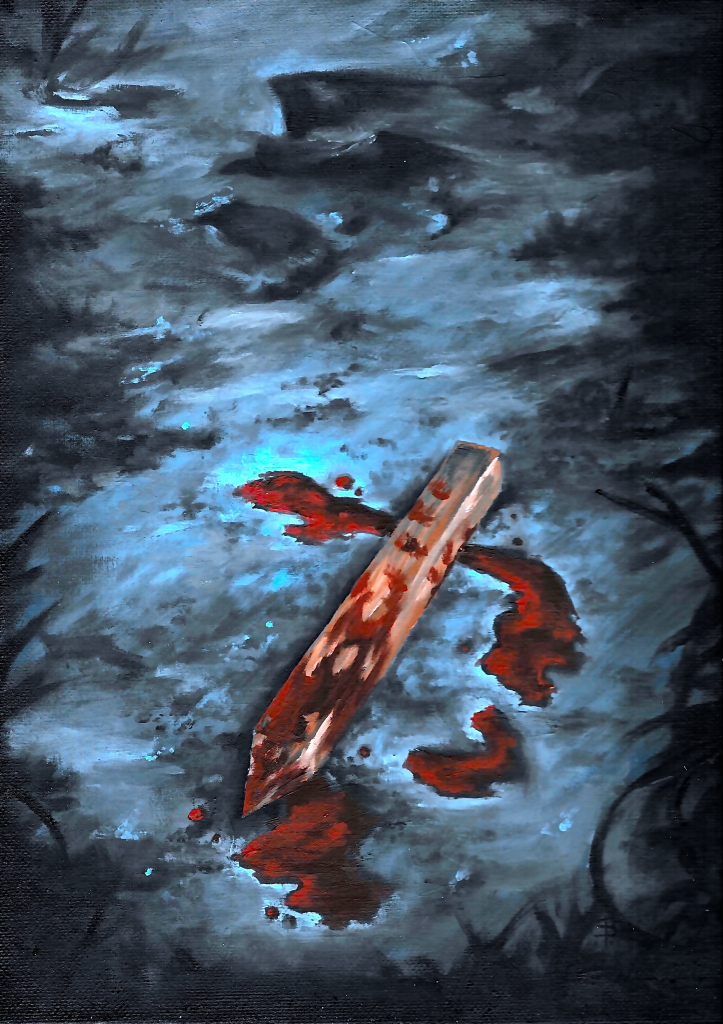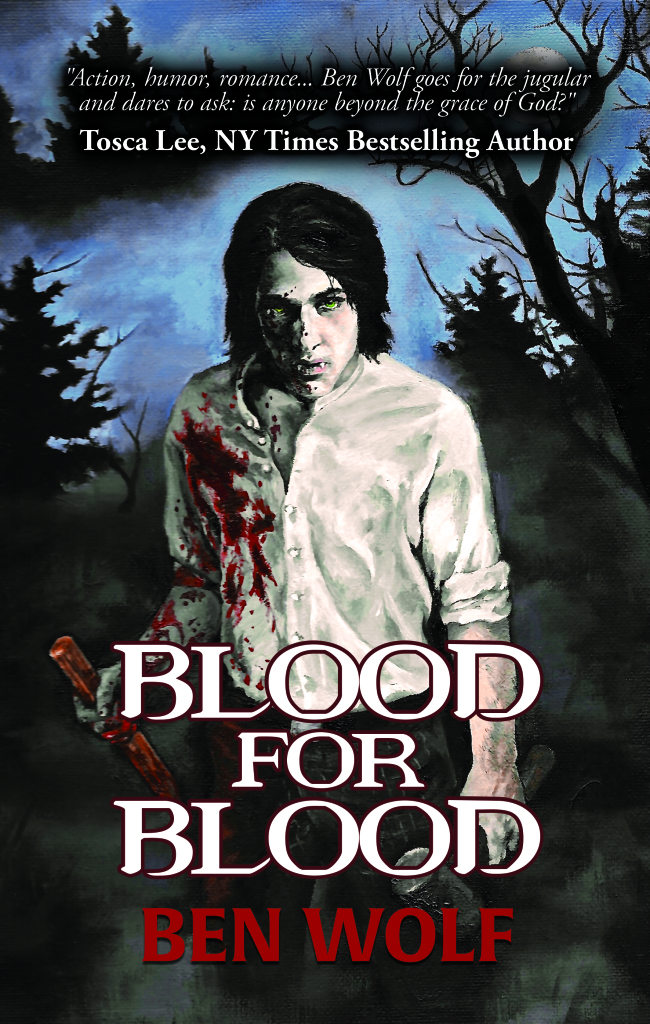
As I mentioned in my first post in this series, vampirism is diametrically opposed to everything God calls good in his Word. But in light of this distinct separation, how would a vampire who got saved navigate the vast chasm between his old existence and his newfound faith? Read on to find out my thoughts on the matter and to get a glimpse at some of the questions I considered when writing my debut novel, Blood for Blood.
You might be a vampire if…

The back cover art for Blood for Blood
by Benjamin Lucas Powell
…you can only be killed by a stake through your heart?
“We’re working on securing the tent right now, so that’s what I need help with. Why don’t you come with me?” Luco led Raven over to one of the tent’s corners. He bent down and scooped up two tools, then turned back to Raven.
In his hands, Luco held a large mallet and a thick wooden tent stake. Raven’s heart beat faster.
After staring at them for a long time, Luco extended them to Raven, which quelled the mounting tension in his chest. Wide-eyed, Raven took them in his hands.
“I need you to secure these ropes to the ground so the tent doesn’t collapse. Make sure they’re nice and taut. I’ll send Garrett over to help you. Come find me when you’re done.” Luco patted him on the shoulder again, glanced at the mallet and the stake, and then walked off without so much as acknowledging Raven’s confused expression.
Raven stared at the tools for even longer than Luco had. Surely Luco realized the effect that these particular items would have on a vampire. They meant death for a second, final time. A quick trip to the damnation that awaited those whose souls are forfeit. Pain and suffering for the rest of eternity.
Now Raven held them in his hands, the wood rough against his palms, ready to secure a tent erected and dedicated to Almighty God, the everlasting enemy of Satan and his followers. Mallets and stakes both killed vampires and furthered the work of Jesus Christ.
Raven didn’t want to fathom how many vampires had been slain over the centuries by tools just like these. The idea set him on edge, but it didn’t disturb him nearly as much as considering that perhaps this exact pair had been used to kill a vampire at some point. And how many more vampires would perish in the future because of these very tools?
“Hey,” a gruff voice called from behind him. Garrett, also gripping a mallet and a stake of his own. “Are you going to help or not?”
Raven nodded. “Lead the way.”
“Good. Then come with me,” Garrett said. “We don’t have all night.”
He turned toward the tent but didn’t see Raven raise his left eyebrow. All night was exactly what Raven had.
There, at the base of the tent, Raven pulled one of the ropes taut, crouched down to line up the stake between a pre-tied loop in the rope, and swung the mallet.
– Excerpted from Chapter 15 of Blood for Blood, by Ben Wolf
In most lore, vampires are only vulnerable to a few things, and only two things can actually kill them: sunlight and stakes through the heart. The stake-through-the-heart option is actually a bit nebulous, though, depending on which version of the lore you follow.
Some lore suggests that vampires who get staked are done for. That’s it. End of story. Other lore mandates that only certain types of wood are effective for stakings, and in contemporary fiction some vampires (think the Blade series of movies) the stakes have to be silver, or the vampires can be killed with other silver objects as well (like Blade’s sword).
Yet other lore posits that vampires who are staked will die, but can come back to life if/when the stake is pulled out. Thus, the only way to be sure that you’ve killed the vampire is to stake them and cut off their head, then stuff the vampire’s mouth/head with garlic. In some lore, folks would even bury the head separate from the body, sometimes even miles away, just to make sure the vampire was really, actually dead.
This type of lore is closest to what I utilized in Blood for Blood. Vampires can be staked, but if that stake is removed, they can continue to function—as long as they get more blood, and quickly. To finalize a vampire’s end, a person would have to stake him, cut off his head, and stuff it with garlic.
In some lore, the decapitation and garlic-stuffing was said to free the vampire’s soul, whatever that means. I suppose it depends on your stance regarding whether or not vampires have souls (see #10). If you subscribe to the lore in which a person forfeits his soul when he becomes a vampire, then how does his soul get “freed?” Is it simply free to be damned, once and for all? The lore doesn’t explicitly say.
So how does this stack up against the Bible?
Paul is very clear on the role of the heart in regards to salvation in Romans 10:9-10 (NIV):
If you declare with your mouth, “Jesus is Lord,” and believe in your heart that God raised him from the dead, you will be saved. For it is with your heart that you believe and are justified, and it is with your mouth that you profess your faith and are saved.
Belief comes through the heart, and the mouth (arguably the intellect or the head) speaks it into existence by accepting it. The Bible is clear that the head and the heart are connected. Putting a stake through a vampire’s heart won’t kill it, nor will cutting off its head, but combining both of those actions will end a vampire’s undead existence.
Kind of gruesome to think about. But the alternative is equally as horrible: a vampire “lives” on, consuming the blood of living folks and often turning them into vampires as well.
OR you can end a vampires existence as I purport in Blood for Blood: by getting them to willingly follow Jesus instead of their old ways. That way no one gets staked and no one gets their head chopped off.
What do you think? Is there more to the biblical connection between wooden stakes and chopping off vampires’ heads beyond what I’ve described? Please share your thoughts in the comments section, and grab a copy of Blood for Blood today by clicking on the cover image below.

